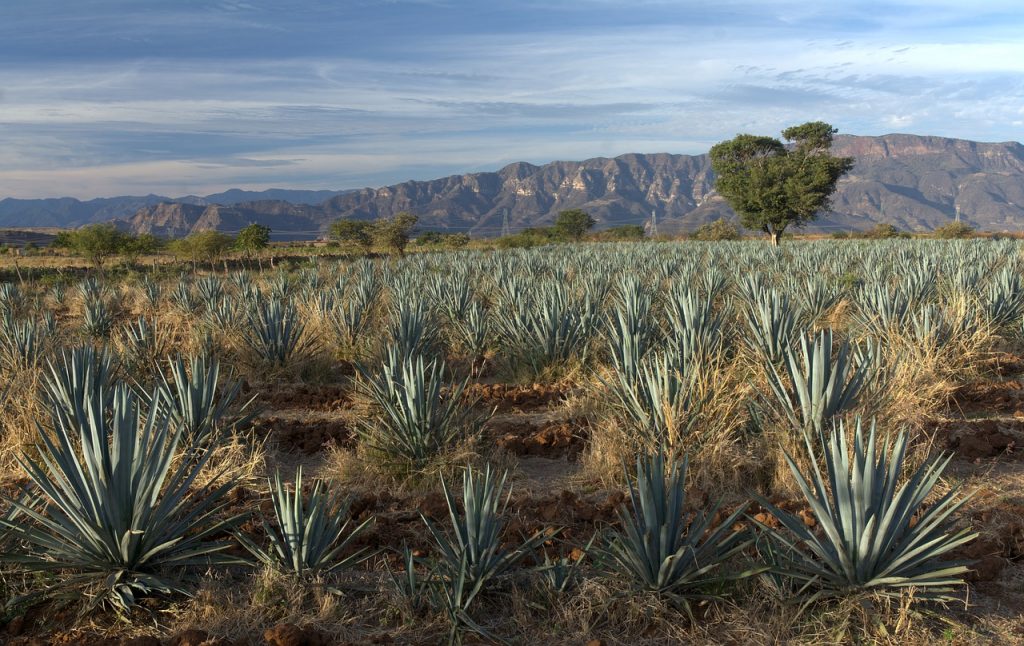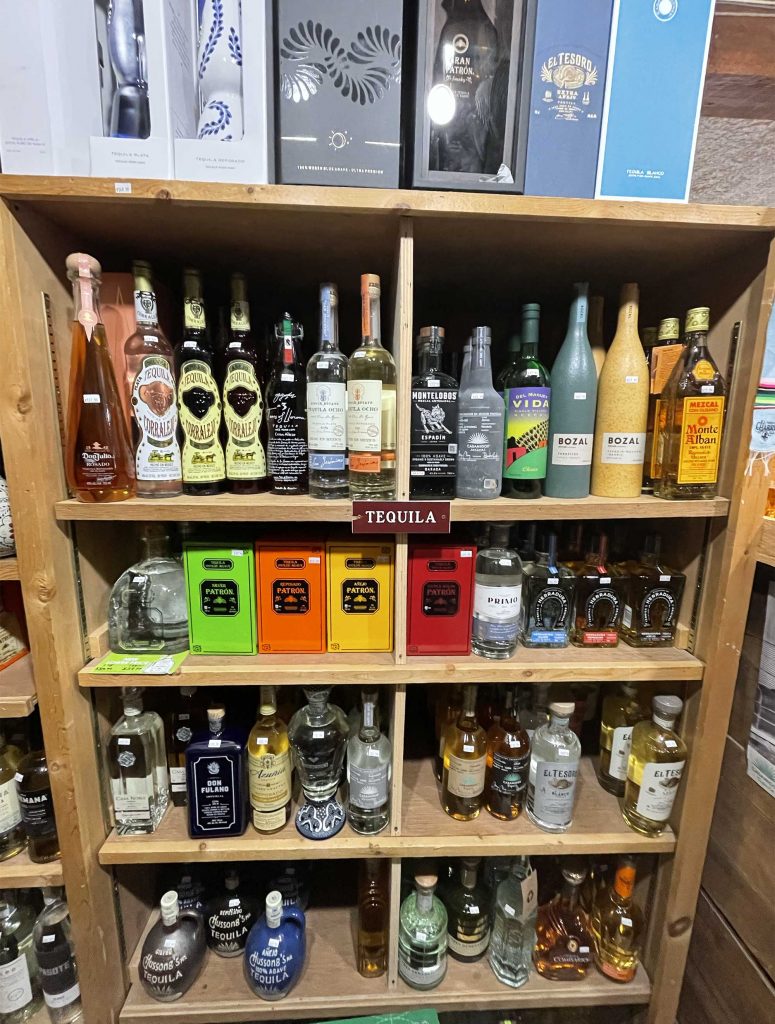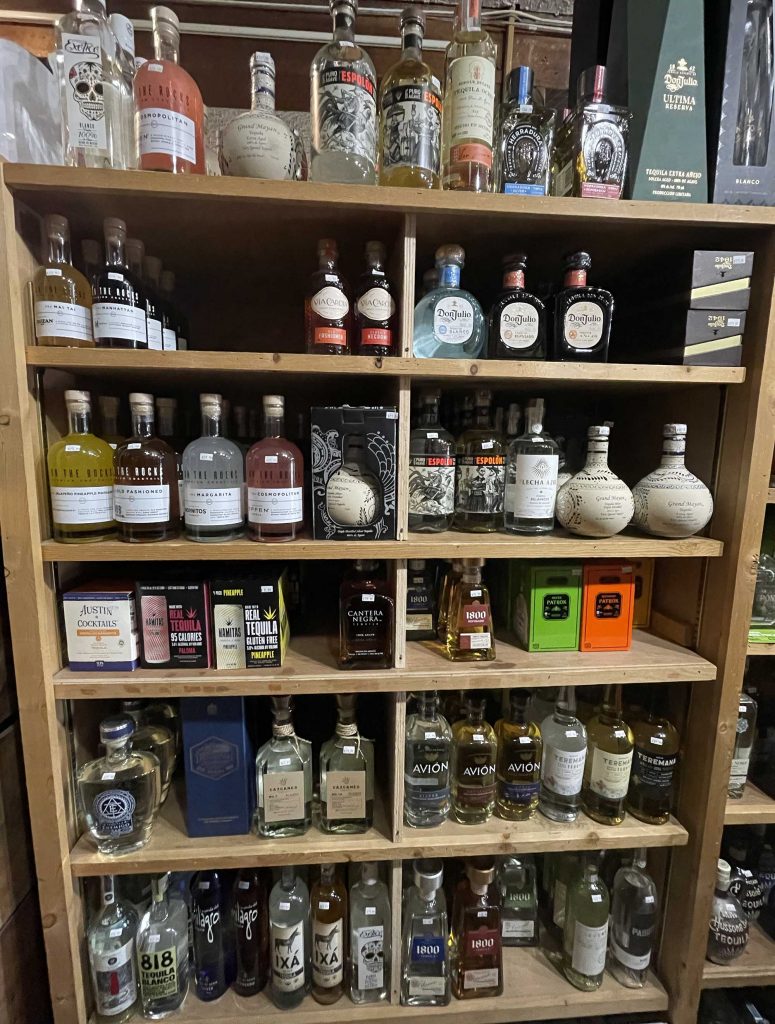TEQUILA

Tequila is a distilled spirit made from the Agave tequilana Weber Blue, blue agave or Agave Azul, and produced only in five areas of Mexico: Jalisco (where 99% is made and home to the town Tequila) as well as Guanajuanto, Michoacan, Tamaulipas and Nayarit – these are known as the Denomination of Origin Tequila (DOT) and recognized as such in more than 40 countries.
There are 166 different species of agave, 125 of which can be found in Mexico but only the Weber Blue (named after the German botanist who first classified the species in 1905 due to the slight blue hue of its green foliage) can be used to make Tequila. These plants are particularly suited to the silicate-rich, red volcanic soils in the region around the city of Tequila with more than 300 million plants harvested there every year.
Tequila Guide
Essential info:
- Colour: Can range from clear, unaged spirit (blanco) to light gold (reposado – rested) and a vibrant gold (añejo – aged). Some Tequilas are extra-aged giving them a richer gold hue.
- Region: Produced in Mexico – there are five Mexican states that are legally allowed to produce Tequila: Jalisco and parts of Guanajuanto, Tamaulipas, Michoacan and Nayarit.
- ABV: Typically bottled at 35% in Mexico, 40% in the US and 38% in Europe.
- Made from: The agave plant, which although has the appearance of a cactus, is a succulent related to the lily family and native to Mexico. Premium Tequilas are made from 100% blue agave, while lower-end tequilas, called ‘mixtos’, typically contain 51% agave with the remaining made up of molasses, corn syrup or other sugars.
- Translation: The name is derived from the Mexican town of Tequila, which lies to the northwest of the major city of Guadalajara.
How is Tequila made?
Tequila is made from ripe blue agave plants which take a minimum of six years to mature but those planted in the highlands frequently take much longer to reach maturity and can be up to 12 years.
Unlike whisky where the majority of time is spent in the ageing process, producing tequila requires a vast amount of time invested in cultivation.
At maturity the blue agave plant produces a single flower then dies, but just as the plant begins to flower skilled harvesters called ‘jimadors’ cut off the shoot with a sharp curved tool called a Coa, preserving the starch stored in the heart of the plant.
The hearts are known as the piña as they resemble pineapples with jimadores cutting the plants’ spiky leaves as close to the piña as possible. The ripe hearts, which have an average weight of 32kg but can vary from 10-100kg, are then halved, quartered and slow roasted in traditional ovens called ‘hornos’ for 24-48 hours or baked in faster steam ovens called ‘autoclaves’ for 7 hours where the starches are converted into fermentable sugar.
After cooking the hearts are pressed and shredded to release the sugary juice, known as aguamiel or ‘honey water’. It is then put into fermentation tanks where yeast is added, though traditionally spontaneous fermentation using naturally occurring airborne yeast is still used by a small number of distillers.
The liquid is left to ferment in open or closed vats of wood or stainless-steel tanks for 24-96 hours. Sometimes distillers add some of the agave fibers from which the liquid was extracted to the tanks which form a seal and trap aromatics in the fermentation. The resulting liquid has a 6% alcohol content which then has to be distilled a minimum of two times by a combination of pot and column stills made of copper or more commonly stainless-steel. The style of tequila produced is controlled considerably by the distiller who must find a balance between different flavour compounds and the temperatures they’ll evaporate at. The resulting alcohol content varies between 70 and 110 Proof and is the basic Tequila Blanco, or silver Tequila.


